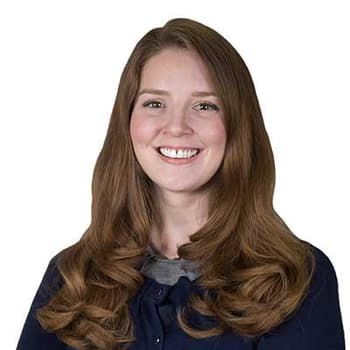Learn the truth about eight myths associated with disruptive behavior disorder.
There are severaldisruptive behavior disorder mythsand misunderstandings. Separating these myths from facts can be difficult and complex. One of the keys tounderstandingdisruptive behavior disorderis to understand that it is considered by the medical community to be a mental health condition. Disruptive behavior disorder can be very upsetting to families and disrupt normal family function, but with proper knowledge, the condition can be managed.
Myth #1: Children with disruptive behavior disorder are bad kids.
Fact: Disruptive behavior disorder a diagnosable mental health condition, often influenced by outside factors.
Many people are under the impression that disruptive behavior disorder is just a child misbehaving. In reality, disruptive behavior disorder involves a more persistent pattern of acting out and opposing authority. TheDiagnostic and Statistical Manual of Mental Disorders, 5th Edition (DSM-5)indicates that the following symptoms of disruptive behavior disorders must exist for at least 6 months:
- Losing temper easily or being angered quickly
- Arguing frequently with others
- Refusing to do what is asked of them
- Deliberately annoying others
- Blaming others for their mistakes
These symptoms go beyond mild misbehavior or a phase and are believed by the medical community to indicate a mental health condition.
Treatment Can Be Life Changing. Reach out today.
Whether you are struggling with addiction, mental health or both, our expert team is here to guide you every step of the way. Don’t wait— reach out today to take the first step toward taking control of your life.
While disruptive behavior disorders are often assumed to be the fault of the child, there are many factors that can influence the development of disruptive behavior disorder.
Myth #2: There’s only one type of disruptive behavior disorder.
Fact: Disruptive behavior disorder is a term that includes multiple behavioral disorders.
There are severaltypes of disruptive behavior disorders. The most common disruptive behavior disorders are oppositional defiant disorder and conduct disorder.Oppositional defiant disorderis a persistent and frequent opposition to authority. This can be manifested as frequent temper tantrums, constant arguing with or talking back to adults, and consistently acting vindictively toward others.
Conduct disorderis a more serious disruptive behavior disorder in which basic social rules are consistently and frequently violated. Conduct disorder may involve deliberately harming others, setting fire to other’s property, deliberately damaging others’ property, being cruel to animals and running away from home. Conduct disorder is associated with a higher risk of criminal behavior later in life and increases the risk of antisocial behaviors later in life.
A less common disruptive behavior disorder that is sometimes experienced includesintermittent explosive disorder. Children with intermittent explosive disorder will sometimes react with intense, and sometimes violent, anger at small incidences that should not illicit that level of anger. These episodes are not an isolated event but are a pattern of behavior.
In addition to these well-defined disruptive behavior disorders, there is also a diagnosis called disruptive behavior disorder not otherwise specified (NOS).Disruptive behavior disorder NOSis used by some medical professionals to describe children who are not behaving but do not meet the criteria for a category of clinical disruptive behavior disorder. This term is less descriptive in the medical field than other types of disruptive behavior disorders and is not used as commonly.
Myth #3: Medication is the preferred treatment option for disruptive behavior disorder.
Fact: Medications are not the preferred treatment option for disruptive behavior disorder.
Disruptive behavior treatment optionsinclude therapies that involve the child, their family, their teachers, and any other support systems. Treatment focuses on improving unwanted behaviors and examining and treating the underlying causes.
Common treatment methods include parent training, family therapy, and school-based interventions.
- Parent trainingleads to better behavior modification and increases the chance of long-term behavioral changes. Collaborative problem solving can also promote improved behaviors by encouraging the child to work through problems with their parent and develop constructive solutions.
- Family therapyis another form of therapy in which the needs of the whole family are addressed. For example, parents with a child with a disruptive behavior disorder are more likely to experience marital stress, which in turn worsens the disruptive behavior disorder. By addressing this marital stress as part of family therapy, the child’s disruptive behavior disorder will likely improve.
- School-based interventionsinclude establishing clear rules, rewarding positive behaviors and utilizing time outs. These strategies can be implemented to reduce boredom and improve behavior.
Medications should be used more as a last resort and are typically used either to augment the effectiveness of therapy in more severe cases or when therapies are not fully effective.
Myth #4: Disruptive behavior disorders are always the result of trauma.
Fact: Trauma is one of many factors that influences the development of disruptive behavior disorder.
Disruptive behavior disorderrisk factorsinclude physical, genetic and environmental factors, and often a combination of all three.
- Physical factorscan include low birth weight and neurological damage.
- Genetic factorscan include having a family member with a similar disorder.
- Environmental factorscan include rejection by a parent, witnessing domestic abuse, exposure to drugs and alcohol before birth, or experiencing physical or sexual abuse.
While trauma may also raise the risk of disruptive behavior disorder, it will not necessarily lead to its development. It is also important to recognize that while one or more of these risk factors may exist in most children with disruptive behavior disorder, they are not all necessary for a diagnosis. Any child may develop a disruptive behavior disorder without any of these risk factors being present.
Myth #5: Oppositional defiant disorder and conduct disorder are the same.
Fact: There are several differences between oppositional defiant disorder and conduct disorder.
Many people searching for answers about disruptive behavior disorders must learn to distinguish betweenconduct disorder vs. oppositional defiant disorder(ODD). They wonder if there is adifference between ODD and conduct disorderthat really matters in the treatment of their child. The fact is, that these two disruptive behavior disorders are quite different and have different levels of severity and risk.
Oppositional defiant disorder is a rebellion against authority that exceeds what is normal for a given age. Children with oppositional defiant disorder will often throw tantrums, act out, misbehave in order to obtain attention, argue with adults, consistently fail to obey adults or deliberately initiate social conflicts. Oppositional defiant disorder also less severe than conduct disorder.
Conduct disorder involves a more severe violation of basic social norms, with behaviors that often involve damaging property or harming others. Conduct disorder may manifest as cruelty towards animals, violence towards others, deliberately damaging property or extreme negative behaviors, such as running away from home or using dangerous substances. Conduct disorder is often more resistant to treatment and is not as likely to result in a positive long-term outcome.
Myth #6: Disruptive behavior disorders only affect young children.
Fact: Adults can have disruptive behavior disorders as well.
While children are typically the main group that have disruptive behavior disorders, it’s also possible foradults to have disruptive behavior disorders. This typically manifests as anger that is poorly controlled, failure to comply with rules or laws, or spiteful and vindictive behavior. Sometimes adults with disruptive behavior disorders developed them in childhood, but adults can also develop disruptive behavior disorders later in life.
Thetreatment plan for disruptive behavior disordersin adults will vary from treatment plans that are recommended for children. This is because much of the therapy for disruptive behavior disorders in childhood focuses on family dynamics, while an adult with a disruptive behavior disorder lacks the parental authority that is necessary for these therapies. Authority figures in the life of an adult, such as employers or government entities are not able to be involved in therapy like a parent would be. Therapy will be directed more at the individual with disruptive behavior disorder and treatment may be more likely to require the use of medications.
Myth #7: Punishment is the best way to correct problem behavior.
Fact: Punishment is not the most effective way to address problem behavior for some people.
Punishment is not the most effective way to help some children with disruptive behavior disorders. Punishment, especially for children who have experienced abuse or trauma, may worsen behaviors. One hallmark sign of disruptive behavior disorder is misbehavior that is motivated by the need for attention. Sometimes children with disruptive behavior disorders are thought to misbehave to help focus the attention on themselves. When punishment is performed by a parent or an authority figure out of anger or without an explanation to the child on how the intervention is intended to change their behavior, it can lead to worsening of the symptoms of a disruptive behavior disorder.
While punishment is not necessarily the best way to correct the problem behavior, psychologists recognize two types of punishers that are used in behavior modification: positive punishers and negative punishers.
- Positive punishersare where an unpleasant effect is created — such as making the child do a new chore
- Negative punishersare where a positive effect is withdrawn — such as keeping the child back from a desired activity.
Positive punishers are shown by research to be the most effective behavior modifiers, but physical discipline itself is not recommended by some psychologists and should never be done in any way that could at all be construed by the child or by others as being in any way abusive. Overall, a combination of rewards and punishers given at the right time and in moderation is helpful in changing negative behaviors. Each individual case of disruptive behavior disorder is different, and the advice of a professional should be followed for each.
Myth #8: Disruptive behavior disorder isn’t treatable.
Fact: There are several effective ways to treat disruptive behavior disorders.
Disruptive behavior disorder treatmentis possible andcan be effective. Treatment often involves therapy that focus firstly on the child affected, then their parents, their family, their teachers and ultimately all their social influences. Both behavior modification and changing the child’s thought process are important parts of this therapy.
A large part of therapy includes the child’s parents learning new or different parenting techniques that will ultimately help their child. Learning new parenting techniques may be difficult for parents who have already successfully raised other children and are not used to the concept of changing the way they parent, but this change in parenting techniques will help the child with a disruptive behavior disorder. Medications may be necessary for more severe cases or for those who do not respond well to therapy. Medications can help to augment the therapies that are being used and will help the child with the disruptive behavior disorder to have the best chance of recovery possible. With the right treatment plan and with the involvement of the child’s support group and parents, recovery from a disruptive behavior disorder is possible.
While there are many myths about disruptive behavior disorder, understanding the truth about the condition can help you or a loved one improve. If you know someone living with a substance use disorder who also expresses symptoms of disruptive behavior disorder, they may need treatment for co-occurring disorders.Call The Recovery Villageto learn more about treatment for co-occurring addiction and mental health conditions.








